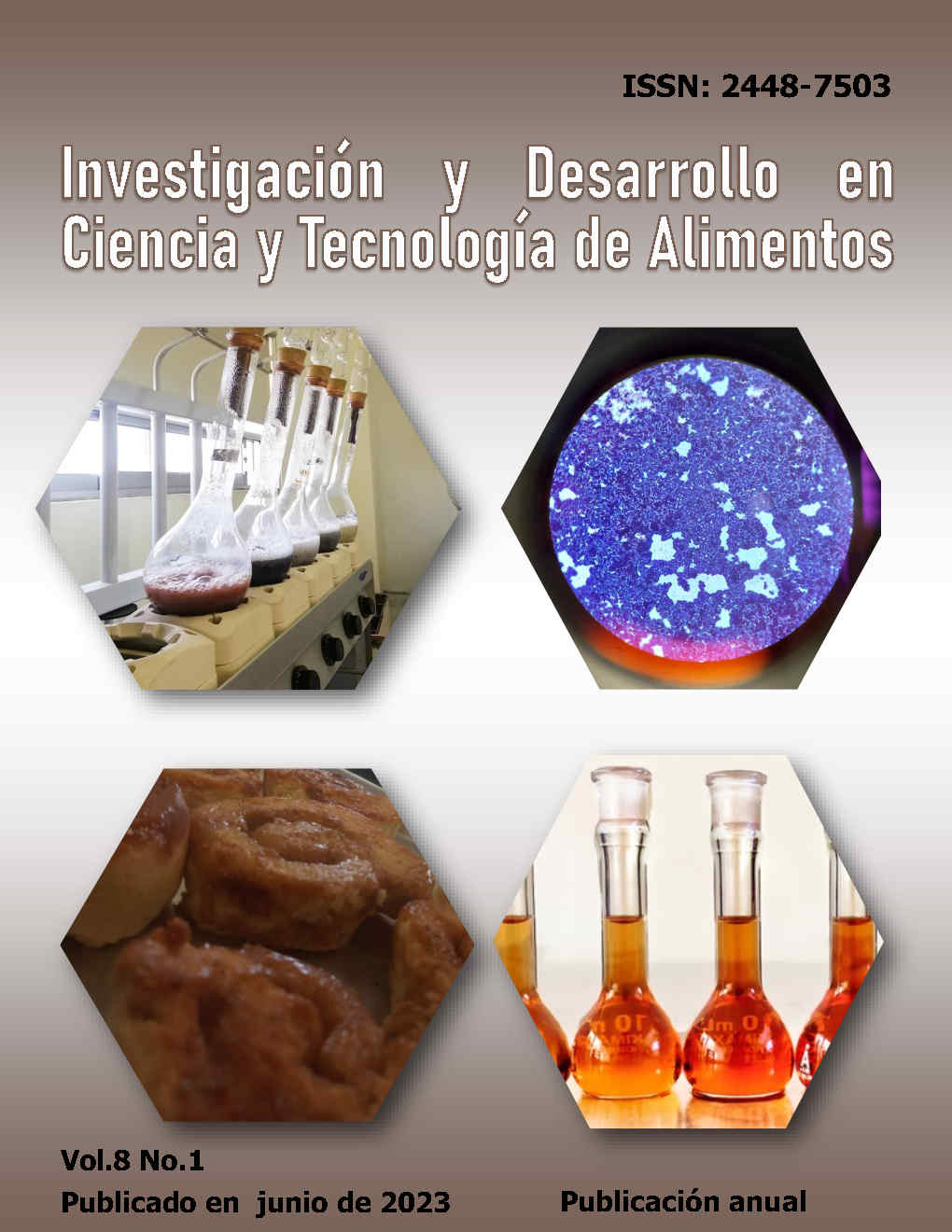Intensidad de helmintos parásitos de Astyanax mexicanus (DE FILIPPI, 1853) colectados en la presa Rodrigo Gómez, Santiago, Nuevo León
DOI:
https://doi.org/10.29105/idcyta.v8i1.20Keywords:
Parasites, zoonosis, abundance, aquatic organisms, helminth fauna, prevalenceAbstract
Globally, aquaculture has increased its social and economic impact through food production, contribution to livelihoods, and income generation. The presence of parasites can influence the difficulty of marketing the product and the mortality of the fish. In the present investigation, the parasites found in Astyanax mexicanus were identified to determine the abundance and prevalence of its helminth fauna, as well as to calculate the association of the intensity of the parasites with their condition factor. Dissection and optical examination of all internal organs were performed with the help of scissors, and they were stained using the Van Cleave Hematoxylin and Semichon Acetic Carmin technique. A chi-square test was performed to determine if there is a significant difference between infected and uninfected male-female hosts. The highest average intensity belongs to the Asocactyle trematode while the highest abundance and prevalence calculated belongs to the Clinostomum complanatum trematode. It was observed that there is no significant difference in the parasite load between males and females, but there is a significant difference in the weight of the hosts between their sexes.
Downloads
References
Bush, A.O., K.D. Lafferty, J. M. Lotz, & A. W. Shostak. (1997). Parasitology meets ecology on its own terms: Margolis et al. revisited. Journal of Parasitology, 83:575-583. DOI: https://doi.org/10.2307/3284227
Choudhury A., Hartvigsen Daverdin R., Brooks D. (2001). Wallinia chavarrie N. sp. (trematoda: Marcoderoididae) in Astyanax aeneus (Gunther, 1860) and Brycononamericus scleroparius (Regan, 1908) (osteichthyes: characidae) from the area de conservation Guanacaste, Costa Rica. The journal parasitogy, 88(1):107-112. DOI: https://doi.org/10.1645/0022-3395(2002)088[0107:WCNSTM]2.0.CO;2
Culver D., & William B. W., (2012). Encyclopedia of CAVES. Segunda edición. AP. pp.37.
De Filippi, F. (1853). "Nouvelles espèces de poissons". Rev. Mag. Zool, 5:164-171.
Esch, G.W. & Fernández, J.C. (1993). Functional biology of parasitism: Ecological and evolutionary implications. Editorial Cambridge, Chapman & Hall, pp.33.
Espinal-Carrion T., & López-López E., (2010). Helminths and lipid peroxidation in Astyanax aeneus (Pisces: Characidae) from a river in the humid subtropics of southeastern Mexico, Laboratorio de Ictiología y Limnología, Departamento de Zoología, Escuela Nacional de Ciencias Biológicas, Dis Aquat Org, 88:215–224. DOI: https://doi.org/10.3354/dao02144
FAO. (2011). Organización de las Naciones Unidas para la alimentación y la agricultura Ediciones. Disponible en: (http://www.fao.org/docrep/014/i1750s/i1750s.pdf).
Gutiérrez-Cabrera, E. (2004). Presencia de Bothriocephalus acheliognathi en la ictiofauna del rio Metztitlan y la laguna de Metztitlan Hidalgo, México, Pullido- Flores G., tesis de licenciatura en biología, Universidad Autónoma del Estado de Hidalgo.
Pérez-Ponce de León G., Mendoza-Garfias B., Rosas-Valdez R. & Choudhury A. (2013). New host and locality records of freshwater fish helminth parasites in river basins north of the Transmexican Volcanic Belt: another look at biogeographical patterns, Departamento de Zoologia, Intituto de Biologia, Universidad Nacional Autónoma de México, Revista Mexicana de Biodiversidad, 84: 556-562. DOI: https://doi.org/10.7550/rmb.32525
Pulido-Flores, G., Monks, S., & Gordillo-Martínez., J. A. (2005). Monitoreo de bajo costo en la evaluación de la calidad ambiental. Centro de Investigaciones Químicas. Universidad Autónoma del Estado de Hidalgo, Revista Internacional de Ciencias Ambientales, 21:578- 583.
Morales-Mejia, J. (1988). Bionomía y ciclo de vida de la sardina plateada Astyanax mexicanus (Filippi, 1853) en la presa Rodrigo Gómez, “La Boca”, Santiago, Nuevo León, México. Tesis de Licenciatura. Universidad Autónoma de Nuevo León. Monterrey, México. pp.52.
Mugica-Ruiz, E., Caspeta-Mandujo, J. (2009). Helmintos parásitos de Astyanax aeneus del río Cuautla, Centro de Investigaciones Biológicas/Facultad de Ciencias Biológicas. UAEM, 6:57-60.
Rico-Mora, R. (1984). Contribución al conocimiento de la biología de Astyanax fasciatus mexicanus (Filippi) (Pisces: Characinidea) en la presa Zicuiran, La Huacana, Mich. Tesis de licenciatura. Universidad Michoacana de San Nicolás de Hidalgo.Morelia, México. pp. 53.
Salgado, M. G. (2009). Manual de prácticas de Parasitología con énfasis en helmintos parásitos de peces de agua dulce y otros silvestres de México. Instituto de Biología UNAM. pp. 9-18.
Torres, M. M., Barajas, M. L. (2004). Descripción de la cuenca hidrográfica del rio San Juan, Presa la Boca, Presa el Cuchillo, Nuevo León. Fondo Mixto CONACyT-Gobierno del Estado de Nuevo León. Disponible en: (http://www.bioecologia.org/docs/cuenca.pdf).
Downloads
Published
How to Cite
Issue
Section
License
Copyright (c) 2023 A.K. Leal-Olvera, L. Galaviz-Silva, Z.J. Molina-Garza, A.C. González-Morales González-Morales, J. A. Delgado-Garduño

This work is licensed under a Creative Commons Attribution 4.0 International License.
Los autores/as que publiquen en esta revista aceptan las siguientes condiciones:
a. Los autores/as conservarán sus derechos de autor y garantizarán a la revista el derecho de primera publicación de su obra, el cual estará simultáneamente sujeto a la Licencia Creative Commons Atribución 4.0 Internacional. que permite a terceros compartir la obra siempre que se indique su autor y su primera publicación esta revista.
b. Los autores/as pueden realizar otros acuerdos contractuales independientes y adicionales para la distribución no exclusiva de la versión del artículo publicado en esta revista (p. ej., incluirlo en un repositorio institucional o publicarlo en un libro) siempre que indiquen claramente que el trabajo se publicó por primera vez en esta revista.
c. Se permite y recomienda a los autores/as a publicar su trabajo en Internet (por ejemplo en páginas institucionales o personales) posterior al proceso de revisión y publicación, ya que puede conducir a intercambios productivos y a una mayor y más rápida difusión del trabajo publicado.





